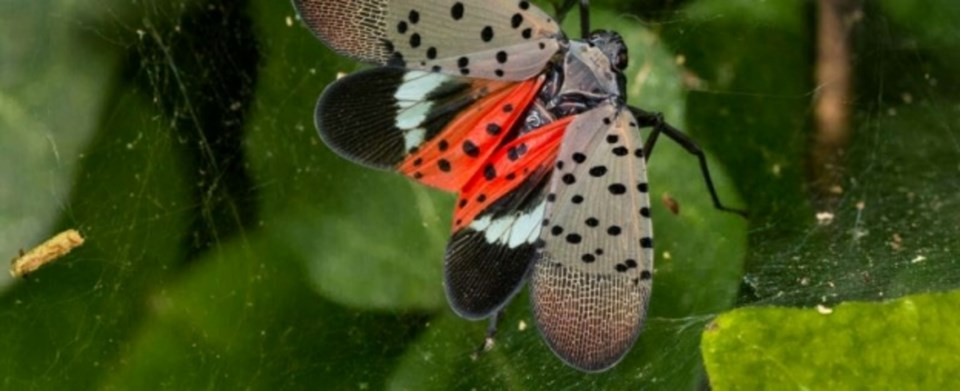The following article was provided by University of Guelph news services.
Agricultural departments across the U.S. are warning residents to look out for the invasive spotted lanternfly, which a University of Guelph entomologist says will likely reach Canada soon.
Andrew D. Young, a professor at the School of Environmental Sciences in the Ontario Agricultural College, studies flying insects. He focuses on flower flies, an important group of native pollinators.
Young says while the spotted lanternfly, or lycorma delicatula, has not yet been detected in Canada, it has been spotted in northern New York state. He expects the insect will soon cross into Canada, where it may pose a threat to vineyards and fruit orchards.
“They’re harmless to humans directly, but spotted lanternflies have already caused millions of dollars’ worth of damage to the grape industry in the U.S.,” he said.
Originally from China and other regions of Asia, the flies arrived in the last decade in North America, where they have no natural predators.
Young explains that lanternflies are communal feeders, and when large numbers of the insects feed on the same tree, the extensive wounds can attract fungal pathogens.
“Over time, this weakens the condition of trees and grapevines and can kill them,” he said, noting the flies also destroy ornamental trees in the same way.
“Their preferred host is the tree-of-heaven – an ornamental Asian tree – but they will readily feed on grapevines, apple, plum, cherry and peach trees, as well as oak, maple, pine, walnut and poplar,” he said.
In the U.S., agricultural departments are asking citizens to watch for the large flies and their distinctive spotted grey wings that open to reveal striking red underwings. The nymphs can be equally striking, often red or spotted black.
“They should be killed on sight, but reporting a sighting is even more important while we’re still at the prevention stage,” Young said.
“Citizens really can help make a difference in detection. If one is found, it should be photographed and then collected,” he said. Referring to the Canadian Food Inspection Agency, he added, “It can be kept in a jar in the freezer, which will kill it, until it can be reported to CFIA online.”
